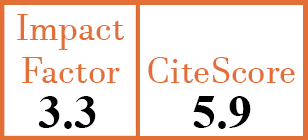Full Papers
Short Form 36 (SF-36) health survey questionnaire in health-related quality of life assessment in patients with inflammatory myopathies
A. Razok1, J. Taylor2, E. Ritz3, K. Wipfler4, K. Michaud5, D. Saygin6
- Department of Medicine, John H. Stroger Jr. Hospital of Cook County, Chicago, IL, USA.
- Rush Medical College, Chicago, IL, USA.
- Rush Research Informatics Core, Rush University Medical Center, Chicago, IL, USA.
- FORWARD, The National Databank for Rheumatic Diseases, Wichita, KS, USA.
- FORWARD, The National Databank for Rheumatic Diseases, Wichita, KS; and University of Nebraska Medical Center, Omaha, KS, USA.
- Department of Medicine, Division of Rheumatology, Rush University Medical Center, Chicago, IL, USA. didem_saygin@rush.edu
CER18678
Full Papers
Free to view
(click on article PDF icon to read the article)
PMID: 40737081 [PubMed]
Received: 04/03/2025
Accepted : 04/07/2025
In Press: 29/07/2025
Abstract
OBJECTIVES:
Patients with idiopathic inflammatory myopathies (IIM) experience significant impairment in their health-related quality of life (QoL); however, there are currently no validated measures to assess QoL in these patients. This study aims to examine the measurement properties of short form (SF)-36 in QoL assessment of adults with IIM.
METHODS:
FORWARD is a U.S.-based databank collecting biannual patient-reported data on rheumatic diseases, including sociodemographics, symptoms, treatment and health-care utilisation. SF-36 produces physical (PCS) and mental (MCS) component scores, ranging 0-100 with higher scores indicating a better QoL. Discriminant and construct validity were assessed using proportion of a priori hypotheses. Responsiveness was assessed using linear mixed models.
RESULTS:
A total of 168 patients with IIM were included (77.3% female, 78.5% White), with an average (±standard deviation [SD]) age of 54.3 (±13.8). Mean SF-36 PCS and MCS were 36.5 (±11.2) and 47.0 (±12.0), respectively. The majority of a priori hypotheses for construct and discriminant validity were met for PCS and MCS. PCS was different between those with low vs. high physical function, disease activity, fatigue and pain, while MCS was different between patients with and without depression and anxiety, and low vs. high fatigue and pain levels (p<0.0001). PCS and MCS had moderate to strong correlations with pain, fatigue, physical function, disease activity, and health satisfaction. Longitudinal changes in these parameters were also significantly associated with changes in PCS and MCS over time.
CONCLUSIONS:
SF-36 demonstrated adequate discriminant and construct validity and responsiveness for health-related QoL assessment in patients with IIM.



